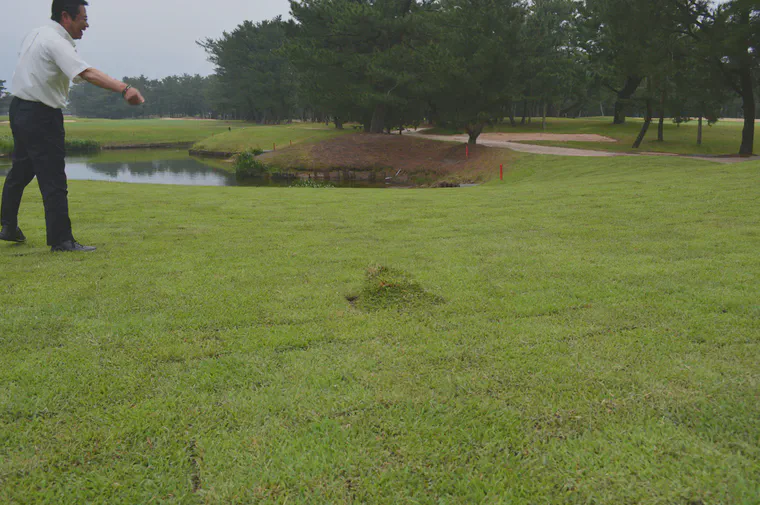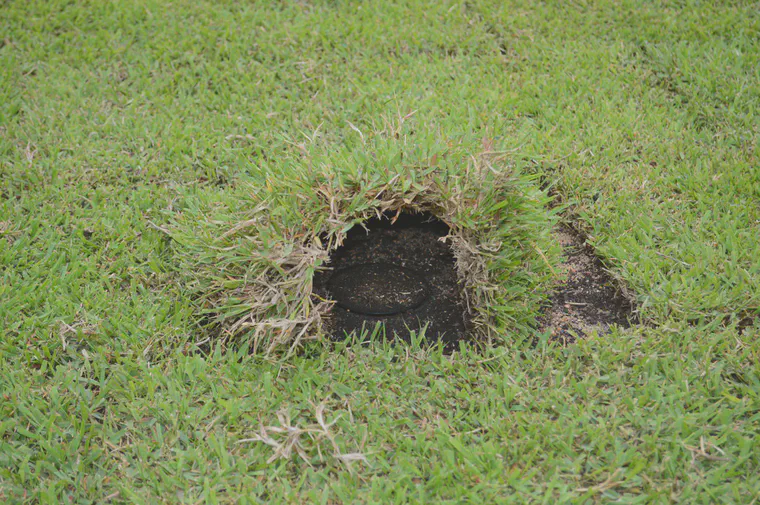Working backwards in turfgrass maintenance
Here are some common questions about turfgrass management:
- how much fertilizer should I be adding at this time of year?
- how often should I topdress with sand?
- how often should I be verticutting?
- how much and what type of aerification should I do?
- what should my mowing height be?
Maybe those aren’t the exact questions, or the exact way you’d phrase them, but they are questions that come up and get posed to me at various times. I can give some general advice about what is normal, and about what I think will work, but what I really encourage turfgrass managers to do is to work backwards to figure out the ideal answer for the grass at their facility at this time.
How do you do that? Well, I apologize—this is a bit of a philosophical post.
It’s along the lines of the one in which I suggest that reactive greenkeeping has advantages over proactive greenkeeping. And you’ll see from the list of questions above, that if I make a “program”—that’s a word I try to avoid in the greenkeeping context—of fertilizer applications, and sand applications, and verticutting, and so on, those programs invariably are proactive.
What I recommend, the working backwards part, is evaluating the playing conditions and working backwards from that.
Are the greens at the desired speed and smoothness? Then keep doing whatever you are doing.
Would you like the greens to be faster? In that case, you probably want to mow the grass a bit shorter. To be able to accomplish that, it helps to reduce the clipping volume. To reduce the clipping volume, the N rate should probably come down. Or more growth regulators should be added. Or less water should be added. The point is, one can work backwards from the difference between the current grass conditions, and the desired grass conditions, to determine what adjustments should be made to the maintenance work.
Would you like the greens to be firmer? In that case, you probably want a bit drier surface and a bit more sand and a bit less organic material at the surface. To accomplish that, increase the amount of sand topdressing, reduce the clipping volume by reducing N fertilizer supply, and over time the surfaces are going to move in the direction you want.
I thought about giving this post the title “growing grass is the easy part.” I hear that phrase a lot from professional turfgrass managers when they describe the full scope of their job and the relative amount of effort they must apply to various aspects of it. It’s easy to grow the grass and easy to maintain 100% grass cover. When one wants to fine tune the quality of the surfaces, and make them even better, I think it makes sense to look at what the conditions actually are, and to work backwards from there to decide on the work priorities.
This is a grossly over-simplified example, but I wanted to include a photo with this post and can make a stretch to have the photo here somewhat related to my thesis.
Here’s some newly-laid noshiba (Zoysia japonica) sod. A question might be how much irrigation should be supplied to this turf—quantity and frequency of irrigation.

And my typical answer might be 2 mm in the morning and 2 mm in the afternoon and 2 mm at night, for the first ten days after establishment, and then to shift to only nighttime irrigation as needed once the roots have grown into the soil.

But that would be the wrong answer. The first thing to do would be to observe the grass. And in observing the grass, one could see that the first thing to do would be to remove the sod that covers the sprinklers. Then think about how much irrigation to apply, and when.
And in thinking more about it, the proper amount of irrigation to supply should not be on a “program” at all, but it should be in response to the plant and soil water status on that day. If it’s raining, or if rain is coming, or if it recently rained, then adding more water would be a waste, and possibly detrimental. One really should supply water in this case based on the grass condition, and not based on a plan.
That’s working backwards. That’s being reactive. And I think this approach has a lot of advantages in optimizing turfgrass conditions.